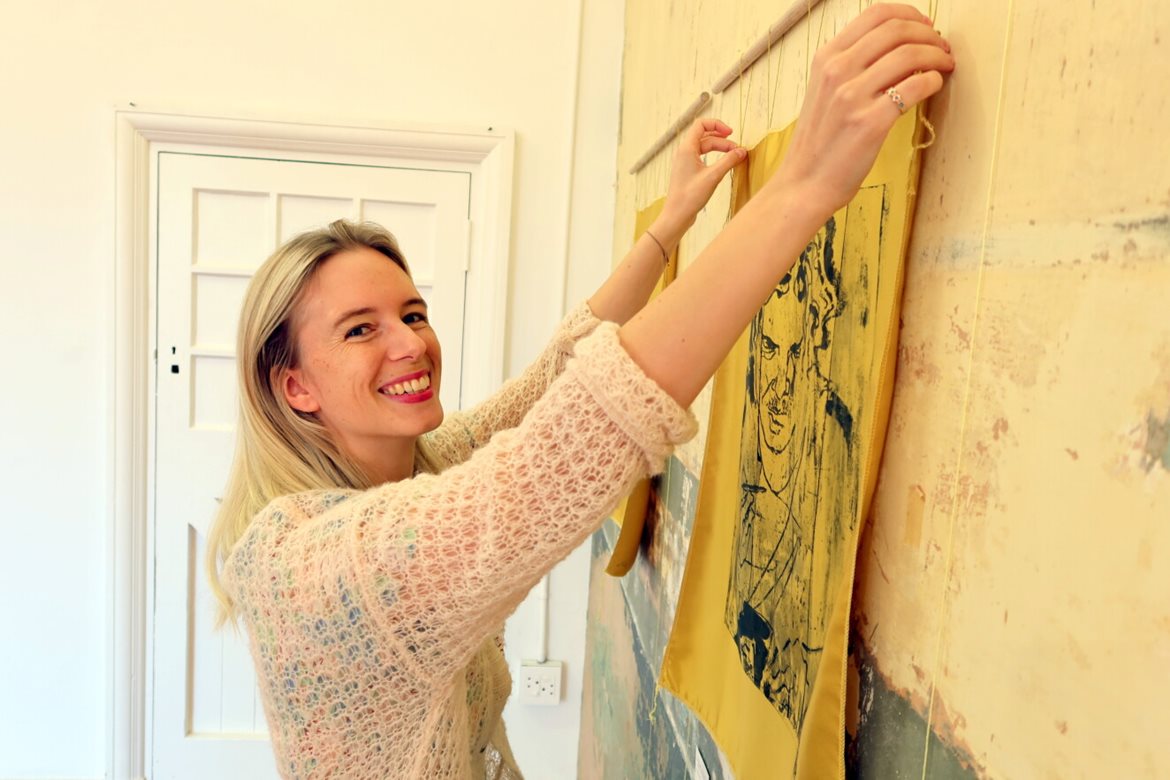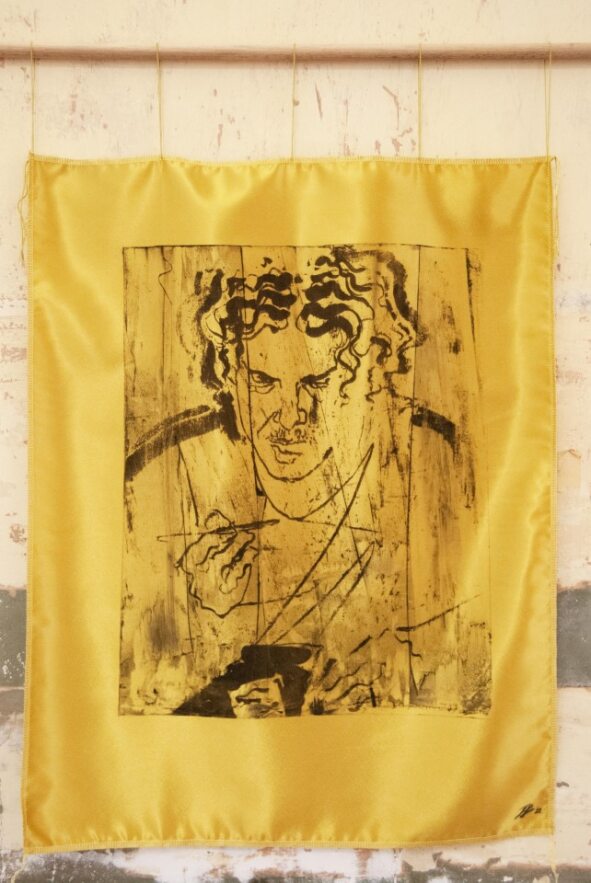Novel approach to printmaking uses eco-friendly and inexpensive materials

The printmaking lecturer in the Department of Visual Arts has been experimenting with and developing the mark-making technique known as planographic printmaking.
“The materials are very basic, like lemon juice, Holsum vegetable fat, green Sunlight soap, Maizena, candle wax and tin foil,” she says. Even fizzy cola soft drink comes into play.
Staple’s research explores low-cost, accessible and more ecologically friendly printmaking methods.
This builds on the existing work of other artists in this area of fine art printmaking, including French artist Émilie Aizier, who created the technique known as Kitchen Lithography, and the Lemon-Etch Litho of US-based Muskat Studios.
Staple says that many artists had modified Kitchen Litho and come up with a variety of methods that worked to a greater or lesser extent. Now Nelson Mandela University has put its own unique artistic spin on the process.
“We have attempted to address these issues with a technique that allows for a wide range of mark-making and does not require a press,” says Staple.
However, despite the low-tech nature of the process, there are still many variables at play. Staple spent two years focusing on researching the technique.
 Stunning showcase
Stunning showcase
She exhibited the results of this work at her solo exhibition On The Drawing Board in April 2023 at the University’s Bird Street Art Gallery.
“This exhibition is the result of a love for printmaking, drawing, problem-solving and the people around me,” she says.
“The works displayed showcase progress and a selection of the best of what was produced during that time, including drawings, plates and prints.
“For the time-being, I am calling this technique ‘Monolitho’. However, the name, like the technique, is not yet perfected. But it is getting close.”
Staple taught two earlier versions, more closely aligned to the Lemon-Etch Litho process, as workshops to her university students in 2021 and 2022.
“I am amazed any of those students came back to study printmaking in their third year! However, substantial progress has been made since then and I now have a consistent, predictable, working technique.”
This is based on stone lithography, the original planographic medium, as well as more recent developments in low-cost and easy-to-access fine art printmaking.
Affordable art
The potential impact of this research is significant: it provides students with a way to continue to produce prints without access to expensive, specialised products and equipment. For most, this is essential once they leave art school.
Due to the specialised nature of the original processes, South Africa does not manufacture the materials involved, so they have to be imported.
“I was trying to find a South African-based alternative that was not as expensive,” Staple says of her research exploring low-cost, accessible and more ecologically friendly print making methods.
“It is non-toxic and also uses very little water relative to the other printmaking methods, and most of the materials are recycled.”
Her other love – drawing – helped to prepare her for the “more unforgiving” planographic printmaking process, where erasure is not possible, and speed is called for.
“Once the mark has been made on the tinfoil plate, using a greasy drawing tool, it cannot be removed. In this there is ‘honesty’ and it forces you to really pay attention to who or what you are observing.”
The Stellenbosch MA Visual Arts (cum laude) graduate is also co-director of Black Ink. Collective, a group of printmakers, educators and artists who are committed to effecting change within local communities.